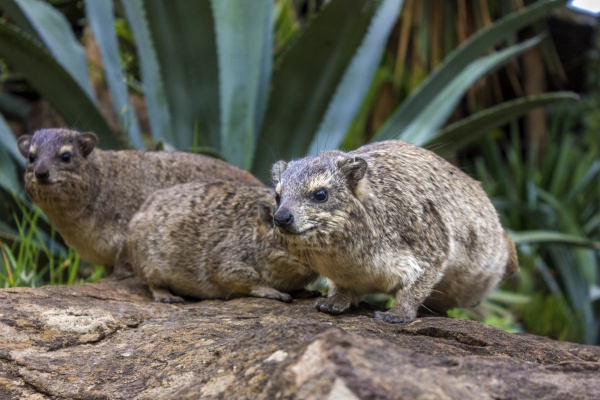Facts About Rock hyrax
The rock hyrax, also known as the Cape hyrax, rock rabbit, and coney, is a captivating medium-sized mammal native to Africa and the Middle East. It belongs to the order Hyracoidea and is the sole species in the genus Procavia. These animals typically weigh between 4 to 5 kilograms, have short ears and tails, and are known to live in social groups ranging from 10 to 80 individuals.
Rock hyraxes are commonly found in rocky terrains with abundant crevices, which they use as shelters from predators. They are most active during the morning and evening because they cannot regulate their body temperature efficiently. Nevertheless, their daily activities can change depending on the season and climate. Generally, rock hyraxes are not endangered and are even considered minor pests in some areas. Interestingly, they can carry the leishmaniasis parasite in countries such as Ethiopia, Israel, and Jordan.
Rock hyraxes possess a squat, sturdy build, thick grey-brown fur, and unique dorsal glands used for social communication. They also have tusk-like upper incisors and flat-footed forefeet. Surprisingly, they are relatives of elephants and manatees. They are distributed throughout sub-Saharan Africa and the Middle East, with various subspecies differing in size and color.
In terms of their lifestyle, rock hyraxes establish their homes in rocky areas, forage in groups, and confront threats from numerous predators. Their diet consists of plants, insects, and grubs. They exhibit a complex social structure and communicate via vocal signals. Regarding reproduction, female hyraxes give birth to 2-4 young after a gestation period of 6-7 months. These animals spend a considerable amount of time resting and demonstrate intricate social behaviors.
Male hyraxes are particularly interesting, displaying territorial behaviors and falling into different categories such as territorial, peripheral, early dispersers, and late dispersers. They are known by various names in different regions, and their dung and urine produce a substance called hyraceum, which is used in naturopathic remedies and perfumery.

 Eswatini (Swaziland)
Eswatini (Swaziland)